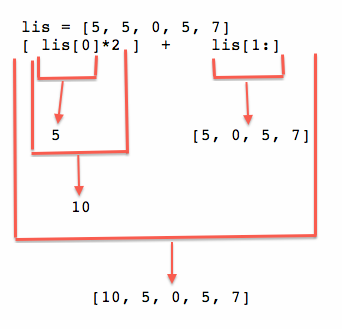In-class notes for 02/28/2014
CS 121B (CS1), Spring 2014
Syllabus document.
Gone Wed afternoon-Sun next week. Quiz will be on Friday 3/7 instead of Wendesday 3/5.
Guest speaker on Friday: Prof. Richey, machine learning
Reading assignments are part of some homework assignments, and submitting a reading question is the way you submit your work. Please read it thoughtfully enough to come up with one genuine question.
Daily questions (optional) are for other questions you may have on assignments and technology that you would like to see discussed in class.
Piazza is for questions that may arise between classes. Use this instead of email or something to get potentially quicker response, or see what other folks are saying.
Changed
import cImagetoimport cImage as imagein notes and homework
Submitted questions on assignments and technology
Upcoming
Read online text: Strings
submit at least one reading question by 9am before the next class meeting
Submitted questions on readings
About lists
Concatenation operator for lists
+(operator)- 2 arguments: Any two lists
- Return: A single list that consists of all elements in the list arg1 followed by the characters in arg2
"hello" + "world" --> "helloworld"Can be used to "reassemble lists". Example:lis = [5, 5, 0, 5, 7] [ lis[0]*2 ] --> [10] [ lis[0]*2 ] + lis[1:] --> [10, 5, 0, 5, 7]
Tracing a list concatenation:

Recursion
Recursive code for drawing sprig, from last time
A function is recursive if it calls itself within its own definition. The effect is to accomplish the same computational steps (presumably with modified arguments).
Exercises: Answer as many as you can in the time allotted, working together, in order.
Exercise: Write a function that counts the number of elements in a list, using recursion
countElements- One argument: A Python3 list
- Return: A non-negative integer, the number of elements in arg1
countElements([1, 'a', 2]) --> 3 countElements([]) --> 0Hints:
Use an
ifstatement to handle the empty-list case separately from the case when the argument is a non-empty list. Here's the start of anifstatement that checks whether a listlisis empty:if lis == []: ....After this you can useelseto isolate the case of a non-empty list.Only one recursive call is needed; it will be in the non-empty list case. Think of options for what you might compute with that recursive call. (The spec describes what it would compute.)
No accumulator is needed!
Use a slice.
Exercise: Write a function that produces a list of doubles of elements in a list of numbers, using recursion
double- One argument: A list of numbers
- Return: A list of numbers, whose elements are twice the corresponding elements of the list arg1
double([4, 7, 1]) --> [8, 14, 2] double([]) --> []Hints:
Use the concatenation operator
+assemble the answer.As before: use
ifto handle the empty-list case separately; no accumulator; use a slice.
Exercise: Write a function whose return value replaces particular value in a list with another value, using recursion
replace- 3 arguments: Any two Python3 values and any Python3 list
- Return: A list, whose elements are the same as the elements of the list arg3, except with each occurrence of arg1 replaced arg2.
replace ('a', 77, [4, 'a', 1]) --> [4, 77, 1] replace (5, 8, [5, 5, 0, 5, 7]) --> [8, 8, 0, 8, 7] replace (5, 8, []) --> []Hints:
- This problem needs three cases:
- empty list
- first element matches arg1
- first element doesn't match arg1
if/elif/else(or nestedif/elseto program for each case separately As before, use concatenation operator, slice, etc.
Be sure to include the first two arguments in your recursive calls
Submitted questions on readings
< >